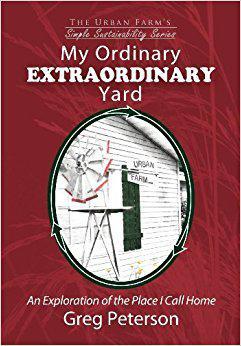Behind Every Successful Farmer…
by Guest blogger: Michael Foley
of Green Uprising Farm
Listen to his/her podcast HERE
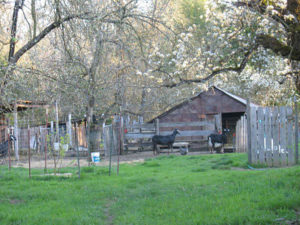 The current crop of business advisers for the new generation of farmers sincerely hopes they can help those young farmers to successful farming careers. Business advisers to farmers have always been convinced they could help farmers achieve success. But as agricultural economist John Ikerd found during the last great farm crisis, in the early 1980’s, the farmers who were failing were precisely the ones who had taken seriously the advice of the business advisers (including Ikerd himself).
The current crop of business advisers for the new generation of farmers sincerely hopes they can help those young farmers to successful farming careers. Business advisers to farmers have always been convinced they could help farmers achieve success. But as agricultural economist John Ikerd found during the last great farm crisis, in the early 1980’s, the farmers who were failing were precisely the ones who had taken seriously the advice of the business advisers (including Ikerd himself).What is “Success”?
What business advisers rarely do is question the meaning of “success.” What does it mean to be successful as a farmer? Does it mean the same thing as being a successful small business person, a successful investor, a successful real estate speculator? The reality of farming is that the vast majority of American farmers today rely for most of their income on sources outside the farm – that proverbial spouse with a good job in town, or full-time or part-time work elsewhere for the farmer, or a few wise investments. Are these farmers “successful”? They manage to continue to farm, and that’s a good thing, because we all need the food they produce. And most of them, it appears, do not farm at a loss – at least not enough of a loss to drive them out of farming.
And yet many young farmers I know assume that “success” means getting a living from their farming. Some farm advisers even tell them to decide how much they want to make and build their farming plan around that. Or to be sure to include a suitable wage for themselves (and their spouse, too) in calculating just how much it is going to cost to farm. No wonder that the majority of young people who start out trying to farm eventually give it up as a loss. They have adopted standards of success that older farmers have long left behind.
Maybe we need to start over. Maybe we need to recognize that the object of farming is not to “make a living” in the business advisers’ sense. We could point out that most farmers farm because that is just what they love doing – and they will do it whether it provides a living or not. We could argue that farming is more a vocation than a business. But, beyond those purely personal goals, how do we assess “success” in farming? Maybe we should start with the obvious, that the goal of farming is to produce excellent food for our community. If that is the goal, how do we define “success” in such a way as to ensure that farmers will stick with it?
Certainly we have to recognize that to produce excellent food for our community, farmers need to be able to pay for both the costs of farming and their own living. But that “living” doesn’t have to come from the farm. Or not all of it. To put it another way, we can have a “profitable” farm – even on standard economic criteria – without having a farm that provides us (and whoever we want to include with “us”) with income at whatever standard of living we happen to desire. A profitable farm pays for itself and then some. How we get a living is up to us. How we pay ourselves for our farming efforts is up to us. We can insist that the farm pay us – but how much? Do we want $100,000 a year? Or $20,000? Or pocket money? It’s up to us. Not up to the farm. The success of the farm can’t stand or fall on its ability to pay us whatever arbitrary figure we choose.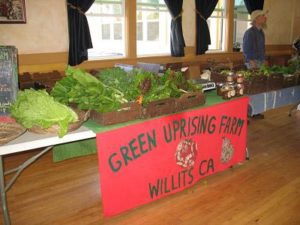
What then does it depend upon? At a minimum the farm must not only pay for itself, it must also be able to provide me, the farmer, with enough satisfaction – monetary and non-monetary – to keep me at it. Because the goal is to feed people, not build a bankroll.
From my first farm to starting over
When I started farming I still had a full-time job. I borrowed two acres from a friend who was anxious not to let it out to local corn and soy farmers any longer and I spent arduous weekends tilling under the corn stubble with an antique rototiller. My neighbors loved the Cherokee Purple tomatoes that came out of that plot, and the next year my oldest daughter joined me, fresh from two-and-a-half years with the horticultural apprenticeship program at the Center for Agroecology and Sustainable Food Systems at UC Santa Cruz. We had a thirty-person CSA that first year. The soil was miserable, our crops small but tasty. When drought hit in August (this was Maryland, and we expected rainfall weekly throughout the season), and hordes of grasshoppers and other insects found our crops, we were forced to buy from more experienced farmers to fill up those CSA boxes. The next year I took six months off teaching while an intern and I piled on the compost, and the acre I grew suffered much less from the insects and produced more than enough for a shrunken CSA and a farmers market stall, despite a continuing drought.
When we moved to California two years later, having helped buy a lovely five-acre farm with another daughter and her family, we started not quite from scratch. The place had been planted to apples, pears, plums, and table grapes, but the trees hadn’t been tended in years, and the vineyard was overrun with Himalayan blackberries (it still is). The barn was dilapidated (it still is) and the fences uncertain. We put a bit of the money from the sale of our Maryland home into the farm, but most went to the land cost. Pretty quickly the farm began to produce an income that covered its own costs and some of ours, thanks to our own hard work and the help of kids and grandkids and lots of friends and interns.
We pay the mortgage out of Social Security, and I make a bit as manager of our local farmers market. The farm, meanwhile, runs in the black and provides us with food and cash for food and a good deal more. Salad greens are our staple crop and attract our best customers, both at market and among local restaurants. Fruit trees, the diverse vegetable production, and my wife’s tiny herd of dairy goats also help sustain a farm that produces for us, our extended family, and the community. Barter with fellow farmers brings us meat and eggs. And we’re learning to produce the staple crops that all of us need for a well-rounded diet.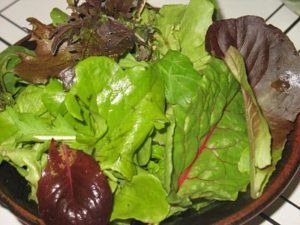
Successful? We feed a lot of people, continue to develop the farm, and pay some bills from farm income. The economists want more, of course; they want us to pay ourselves salaries and enough of a surplus to account for the cost of the land. They want us to borrow and “scale up” to become “real farmers.” But we eat like kings, even if we live like peasants, and we provide other people with great food, too. For us that’s success enough.
About this author:
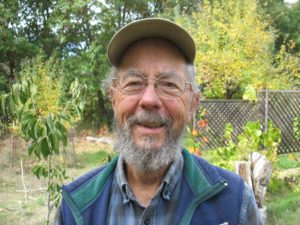 After twenty years in academia, Michael became a farmer. He started in southern Maryland, then moved to Willits, California, where he, his wife, and oldest daughter operate Green Uprising Farm. He is a co-founder, board member, and teacher at the School of Adaptive Agriculture (formerly known as the Grange Farm School), a farmer training and education program.
After twenty years in academia, Michael became a farmer. He started in southern Maryland, then moved to Willits, California, where he, his wife, and oldest daughter operate Green Uprising Farm. He is a co-founder, board member, and teacher at the School of Adaptive Agriculture (formerly known as the Grange Farm School), a farmer training and education program.
Michael has helped create and manage a community kitchen and small farmers group, manage the local farmers market, and has served as both vice president of the Mendocino County Farmers Market Association & president of Little Lake Grange. And with all that, he found time to write Farming for the Long Haul Published by our friends at Chelsea Green.
Books written by Michael:
How to reach Michael:
Website: anothermadfarmer.net
Email: foley.mw@gmail.com







